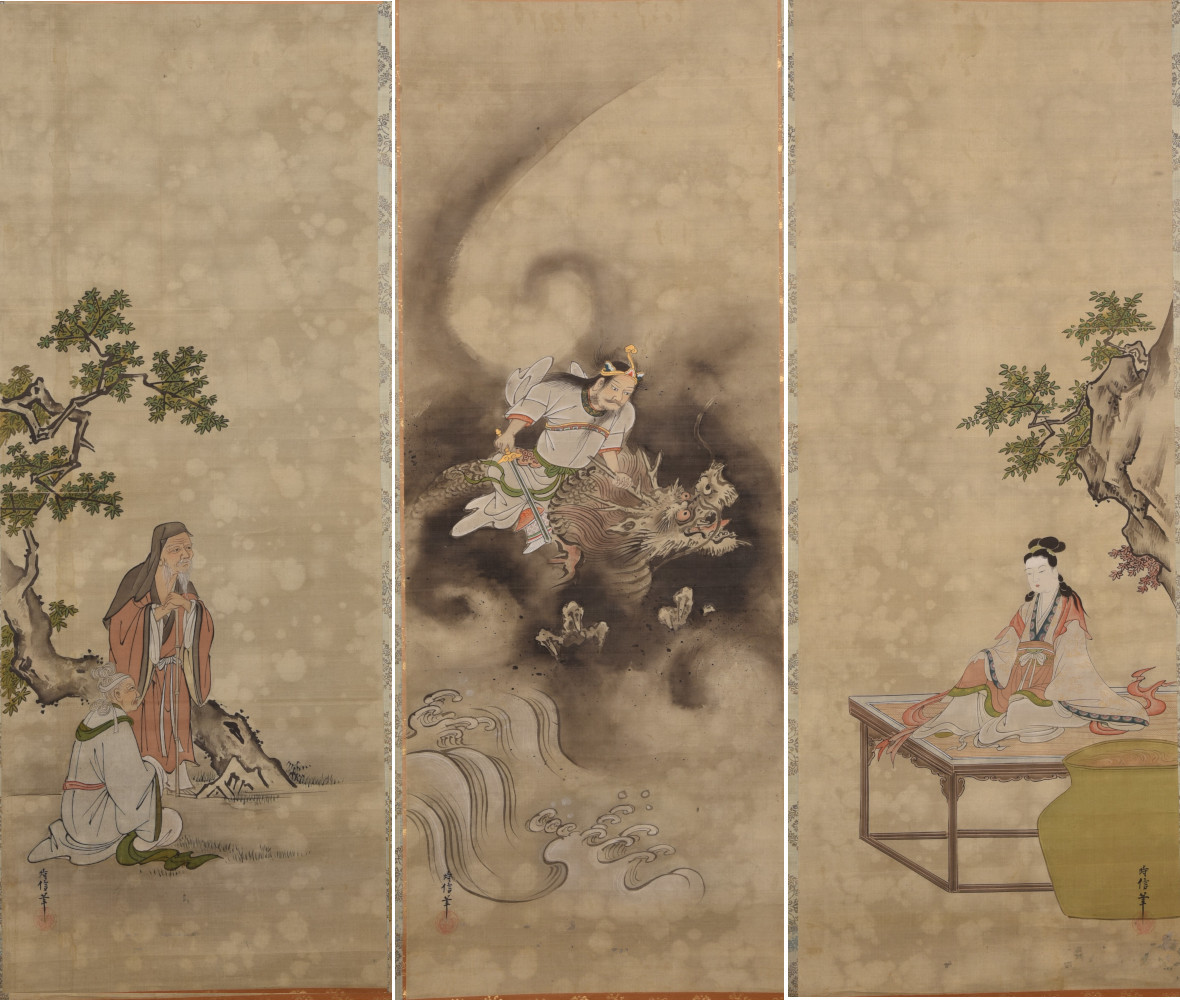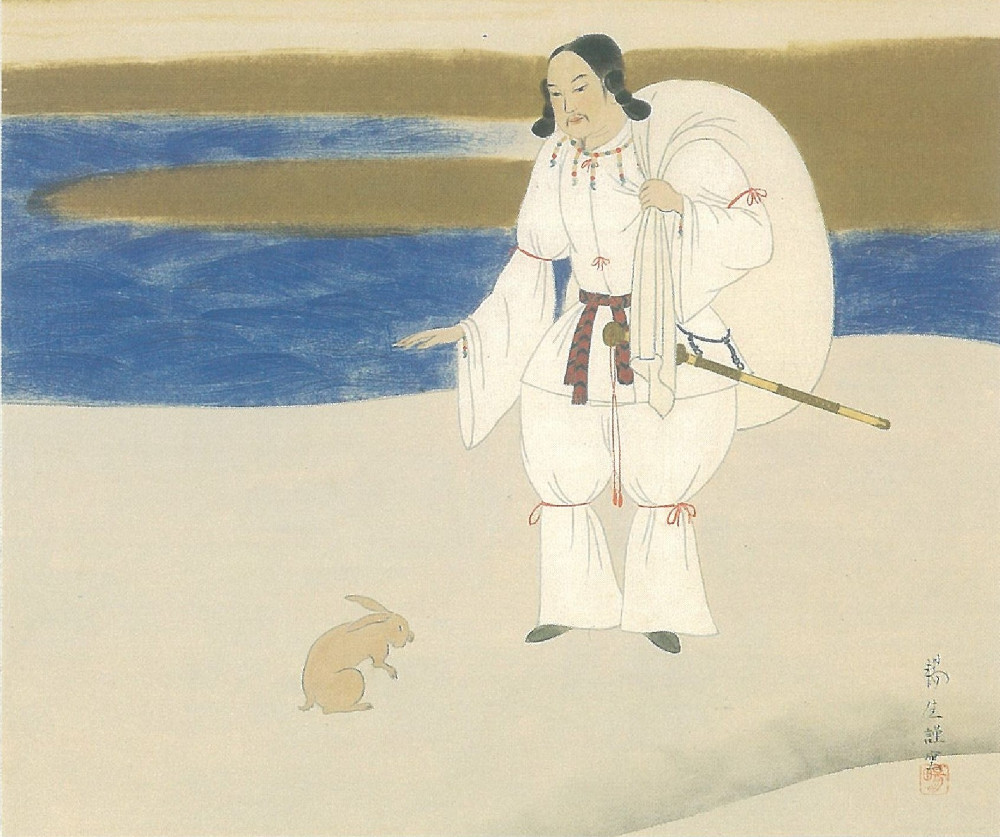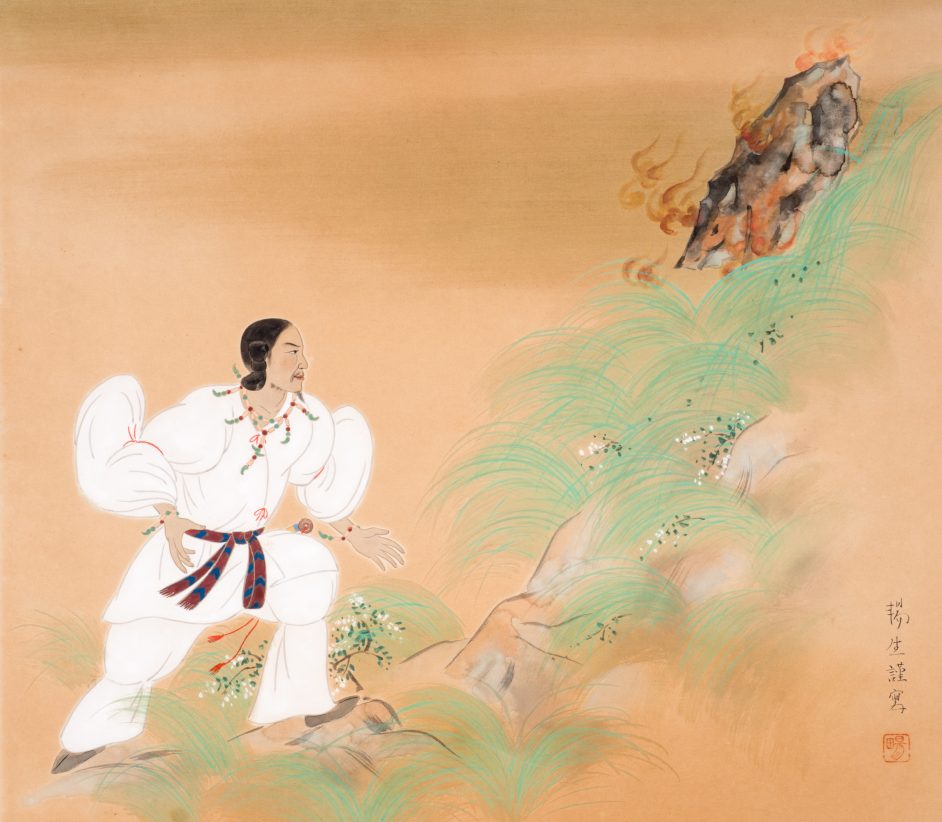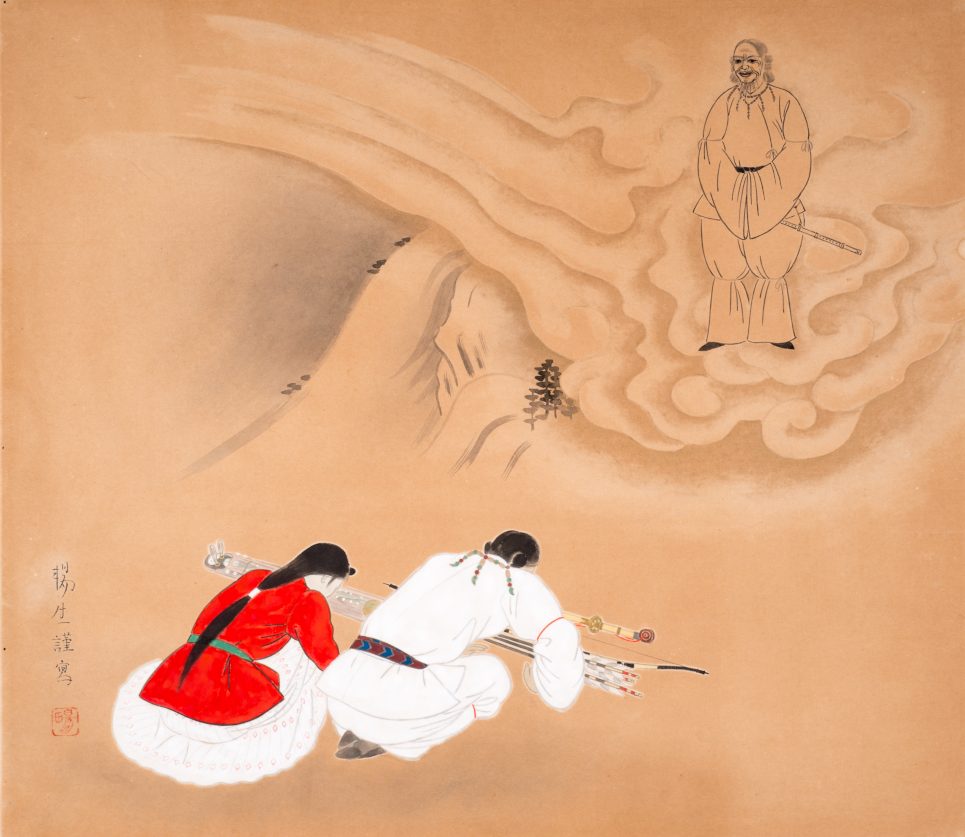
The Izumo region and Izumo Oyashiro Shrine feature prominently in several of Japan’s earliest myths. These tales are recorded in the country’s oldest written records: the Kojiki (Record of Ancient Matters), the Nihon shoki (Chronicle of Japan), and the Izumo no kuni fudoki (Gazetteer of Izumo Province). All three texts date to the early eighth century and record oral narratives of a much earlier origin. The texts occasionally differ on the details, but the amount of shared material is remarkable. In terms of local history, the Izumo no kuni fudoki is a particularly valuable source. A fudoki (“description of regional climate and culture”) was produced for each of the ancient provinces, but Izumo’s fudoki is the only one that survives in a nearly complete form.
Susanoo no Mikoto is one of the primary figures in Izumo mythology. He is the younger brother of Amaterasu Omikami, the sun goddess. After going on a violent rampage in Takamanohara (“the plain of high heaven”), Susanoo was banished to the earthly realm. He descended to Izumo, where he saw an elderly couple weeping with their beautiful daughter, Kushinada-hime. He asked the couple what was wrong, and learned that an eight-headed, eight-tailed serpent known as the Yamata no Orochi had eaten all their other daughters and would shortly return for Kushinada-hime. Susanoo agreed to slay the beast in exchange for permission to marry their daughter. He lured the Yamata no Orochi into a trap, then succeeded in killing it. Afterward, one of the monster’s tails yielded a magnificent sword named Kusanagi no Tsurugi, which Susanoo offered to Amaterasu as a divine gift. (This sword would later become one of the three imperial regalia.) Next, Susanoo built a palace for his new wife, and in celebration of its completion he composed the first wala poem—a verse containing 31 syllables across five lines in a 5-7-5-7-7 meter. He described the rising clouds that covered the land, and it is from this poem that Izumo (“emerging clouds”) takes its name.

The principal deity of Izumo Oyashiro Shrine is Okuninushi no Kami, a descendent of Susanoo’s. He first appears in the legend of the Rabbit of Inaba. Okuninushi and his many brothers were traveling to Inaba Province to seek the hand of Yagami-hime in marriage. As the youngest, he was in charge of carrying the group’s luggage at the rear of the procession. Beside the road, the brothers passed a rabbit writhing in agony because its skin had been removed. The mean-spirited elder brothers tricked the rabbit into bathing in salt water, which caused it excruciating pain. Okuninushi was the only one kind enough to stop and tell the rabbit the correct way to treat its wounds. The rabbit thanked him and predicted that Yagami-hime would not marry any of his brothers. Sure enough, she rejected all their proposals and chose to wed Okuninushi.

Angered by her choice, Okuninushi’s brothers plotted to kill him. They ordered him to capture a boar in the mountains, then rolled a red-hot boulder down the slope and incinerated him. Learning of Okuninushi’s death, his mother appealed to the deities of Takamanohara, who dispatched two goddesses to heal Okuninushi’s burns and restore him to life. His brothers, however, were not content to let him live in peace, and this cycle of death and rebirth was repeated once more. Fearing further mistreatment, Okuninushi traveled to the land of Nenokuni (the underworld) to seek assistance from his ancestor Susanoo.
When he arrived, Okuninushi met Susanoo’s daughter, Suseri-hime, and the pair quickly fell in love. However, Susanoo was reluctant to help Okuninushi and subjected him to a series of trials, such as sleeping in a room filled with snakes. One day while Susanoo was sleeping, Okuninushi tied Susanoo’s hair around a large pillar and planned his escape. He grabbed the sword, bow, and zither (koto) that served as symbols of Susanoo’s authority and eloped with Suseri-hime. Unable to catch them in time, Susanoo gave the couple his blessing and shouted that Okuninushi should use the objects to govern the land.

Returning to Izumo, Okuninushi forced his brothers into submission and became ruler of the region. In order to improve the land, Okuninushi dedicated his time to developing agricultural techniques, and eventually transformed the land into a beautiful and fertile country. The deities in Takamanohara took notice of the resulting prosperity. Amaterasu Omikami sent a series of messengers to convince Okuninushi to turn over the land to her descendants. After much debate, Okuninushi agreed on the condition that a magnificent shrine be built in his honor—the origin of Izumo Oyashiro Shrine. Amaterasu appointed her son Amenohohi no Mikoto and his descendants to serve Okuninushi in the earthly realm. From them are descended Izumo Oyashiro’s hereditary line of chief priests (kokuso). Amaterasu’s grandson, Ninigi no Mikoto, assumed governance of the earthly realm, and his descendants became the Japanese imperial family.
(This English-language text was created by the Japanese Tourism Agency.)
